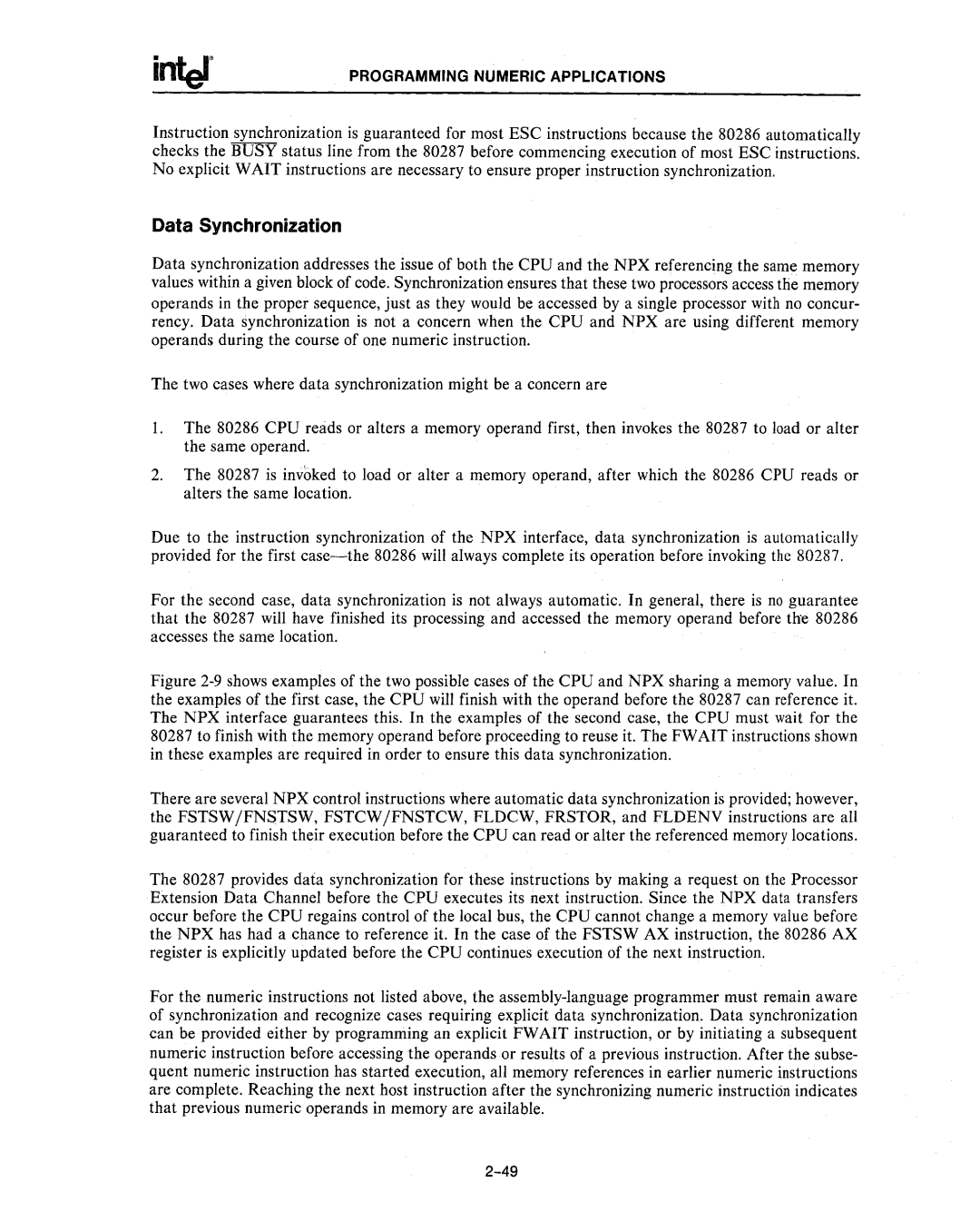
PROGRAMMING NUMERIC APPLICATIONS
Instruction synchronization is guaranteed for most ESC instructions because the 80286 automatically checks the BUSY status line from the 80287 before commencing execution of most ESC instructions. No explicit WAIT instructions are necessary to ensure proper instruction synchronization.
Data Synchronization
Data synchronization addresses the issue of both the CPU and the NPX referencing the same memory values within a given block of code. Synchronization ensures that these two processors access the memory operands in the proper sequence, just as they would be accessed by a single processor with no concur- rency. Data synchronization is not a concern when the CPU and NPX are using different memory operands during the course of one numeric instruction.
The two cases where data synchronization might be a concern are
1.The 80286 CPU reads or alters a memory operand first, then invokes the 80287 to load or alter the same operand.
2.The 80287 is invoked to load or alter a memory operand, after which the 80286 CPU reads or alters the same location.
Due to the instruction synchronization of the NPX interface, data synchronization is automatically provided for the first
For the second case, data synchronization is not always automatic. In general, there is no guarantee that the 80287 will have finished its processing and accessed the memory operand before the 80286 accesses the same location.
